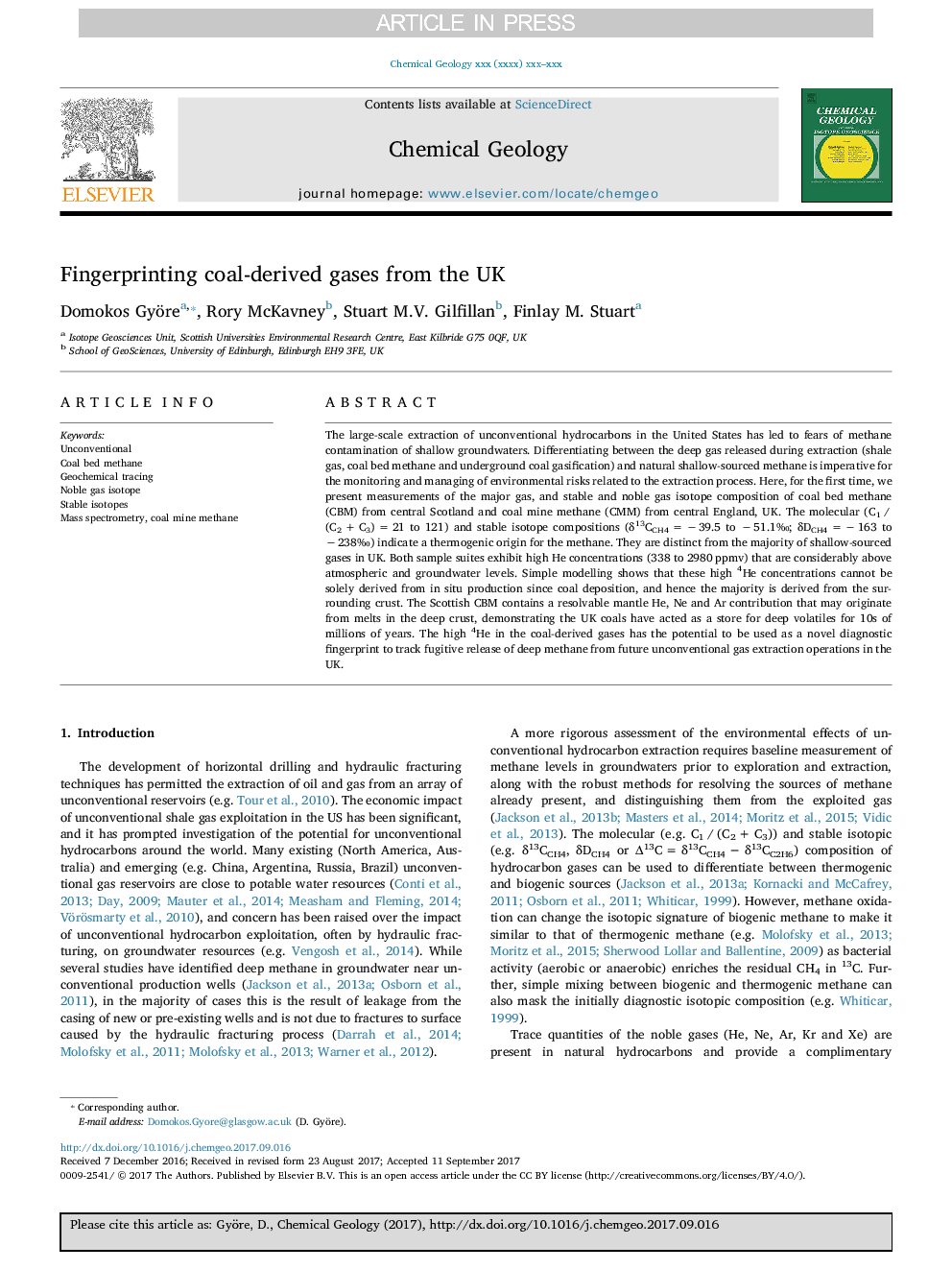ترجمه فارسی عنوان مقاله
انگشت های دست زدن به گازهای ذغال سنگ از انگلستان
عنوان انگلیسی
Fingerprinting coal-derived gases from the UK
| کد مقاله | سال انتشار | تعداد صفحات مقاله انگلیسی |
|---|---|---|
| 156570 | 2018 | 11 صفحه PDF |
منبع

Publisher : Elsevier - Science Direct (الزویر - ساینس دایرکت)
Journal : Chemical Geology, Volume 480, 5 March 2018, Pages 75-85
ترجمه کلمات کلیدی
غیر متعارف متان تخت زغال سنگ، ردیابی ژئوشیمیایی، ایزوتوپ گاز اصیل ایزوتوپهای پایدار، طیف سنجی جرمی، متان معدن ذغال سنگ،
کلمات کلیدی انگلیسی
Unconventional; Coal bed methane; Geochemical tracing; Noble gas isotope; Stable isotopes; Mass spectrometry, coal mine methane;

